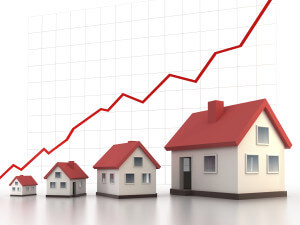In January, Vermillion Financial Advisors prepare their clients for the New Year ahead. To supplement your preparation of the New Year, VFA would like to provide you, our readers, with an article of what to expect in the housing market in 2014!
 Seven years have passed since the worst housing market crash in United States history triggered a global financial crisis. Lehman Brothers declared bankruptcy, and a host of other banks came close to joining them before being rescued in a series of shotgun mergers and acquisitions, the largest of which included Bank of America — Merrill Lynch, JP Chase Morgan — Bear Stearns, and Wells Fargo — Wachovia. Alongside bailouts and a beleaguered stock market, home prices continued to fall, foreclosure rates increased, and by the end of June 2010, it was estimated that nearly a quarter of all U.S. homeowners were underwater — a situation when a home is worth less than its outstanding mortgage. In the years since the crash and financial crisis, the housing market has been making a slow — and bumpy — recovery.
Seven years have passed since the worst housing market crash in United States history triggered a global financial crisis. Lehman Brothers declared bankruptcy, and a host of other banks came close to joining them before being rescued in a series of shotgun mergers and acquisitions, the largest of which included Bank of America — Merrill Lynch, JP Chase Morgan — Bear Stearns, and Wells Fargo — Wachovia. Alongside bailouts and a beleaguered stock market, home prices continued to fall, foreclosure rates increased, and by the end of June 2010, it was estimated that nearly a quarter of all U.S. homeowners were underwater — a situation when a home is worth less than its outstanding mortgage. In the years since the crash and financial crisis, the housing market has been making a slow — and bumpy — recovery.
The Slow and Tenuous Recovery
During the first quarter of 2012, an unsettling 31.4% of homeowners were underwater. Since then, however, about 5 million homeowners have been freed from negative home equity, thanks to rising home prices. Although that still leaves as many as 10.8 million – or 21% – of homeowners underwater we face the new year, the number is expected to continue improving as the real estate market and broader economy continue to improve as well.
The housing recovery has struggled against disruptions to the broader economy. As the end of 2013 has past, Frank Nothaft, vice president and chief economist with Freddie Mac noted, “We’re likely going to see the housing recovery slow down, but not shut down, as we close out the rest of this year due to tight inventories in many markets, rising mortgage rates and slumping consumer confidence.” Looking to 2014, Nothaft said, “Fortunately, the housing recovery should continue to absorb the economic shocks in stride and improve next year [2014].”
In addition, there is expected to be a shift in the coming year from a refinance-dominated mortgage environment to one driven by purchases – for the first time in over a decade. “With the close of 2013 will also come a major transition in the housing finance industry,” said Nothaft. “For the first time since 2000, we’re going to see the mortgage market dominated by purchase activity as the refinance share drops below 50%. And with mortgage rates rising, we’re also going to see the home-sales gains as well as the impressive house price growth begin to moderate to more sustainable levels.”
In the third quarter of 2013, lender-initiated foreclosure action fell to the lowest level since the second quarter of 2006, according to foreclosure listing firm RealtyTrac, Inc. About 120,000 homes nationwide were taken back by lenders during this year’s third quarter, putting the country on track to end the year with about 507,000 complete foreclosures – down about 24% from 2012 numbers. The number of foreclosures reached a high in 2010 at 1.05 million, and since then, rates have been declining.
As the housing market continues its recovery, we can expect a few things to happen in 2014:
- House prices will continue to rise, but at a slower rate than 2013.
- As home prices rise, more homeowners will emerge from being underwater, putting them in the position to finally buy and sell properties.
- Mortgages will be dominated by purchases rather than refinance activity, for the first time since 2000.
- Higher mortgage rates will slow home sales and price gains to more sustainable levels.
- Low inventories will be helped by an increase in new construction and a decrease in investor purchasing.

Look for Smaller, More Sustainable Gains in 2014
In the years leading up to the crash, home values nationwide, on average, had risen about 50% from the first quarter of 2000 to the first quarter of 2005. Certain markets, however, experienced price growth that was significantly higher than the national average. Prices in New York City, Miami and San Diego, for example, jumped 77%, 96%, and 118% respectively. In order to buy houses at these higher prices, of course, Americans had taken on more mortgage debt, and from 2000 to 2007, the value of gross residential mortgages in the U.S. had increased nearly $5 trillion more than household incomes. While price gains are generally a good thing, such increases are not sustainable, especially when average incomes are stagnant or rising only a small percentage.
Although the current market has enjoyed price increases, gains are expected to taper off as we enter 2014. Alex Villacorta, PhD, Vice President of Research & Analytics for Clear Capital, shared some observations in advance of the firm’s 2013 year-end review of home price trends and 2014 forecast, due to release Jan. 6, 2014. Regarding 2013 performance, Villacorta said, “2012-2013 was a good year for national home prices, with 2013 prices likely to end the year seeing a full 10% gain in values. This strong growth is double the rate of historical national price growth, and only eclipsed by the run-up years of 2005-2006 when end of year price gains reached 11.7% and 13% respectively.”
It’s important to acknowledge that certain markets will fall outside – either above or below – these projections. “Despite the projected moderation to historical norms, there still remain many major metros that are either outperforming or severely under-performing the national norms,” Villacorta said. In addition, he cautions, “Granular analysis of market performance remains a key lesson to avoid misleading assumptions for all market participants.”
The Bottom Line
The housing market has been making a slow and steady recovery since the crash that led to rapidly declining home prices, and record numbers of foreclosures and underwater mortgages. The recovery will continue to be driven by a combination of elements including home inventories (supply), foreclosure rates, mortgage rates, availability of credit, institutional investing and factors within the broader economy.
real estate market 2014
Note: The opinions voiced in this material are for general information only and not intended to provide specific advice or recommendation for any individual. Please remember that past performance of investments may not be indicative of future results. Different types of investments involve varying degrees of risk, and there can be no assurance that the future performance of any specific investment, investment strategy, or product made reference to directly or indirectly in this newsletter (article), will be profitable, equal any corresponding indicated historical performance level(s), or be suitable for your portfolio. Due to various factors, including changing market conditions, the content may no longer be reflective of current opinions or positions. Moreover, you should not assume that any discussion or information contained in this post serves as the receipt of, or as a substitute for, personalized investment advice from Vermillion Financial Advisors, Inc. To the extent that a reader has any questions regarding the applicability of any specific issue discussed within this newsletter to his/her individual situation, he/she is encouraged to consult with the professional advisor of his/her choosing. A copy of our current written disclosure statement discussing our advisory services and fees is available for review upon request.
Continue reading and jump to the next post,
How much you need to save for retirement

